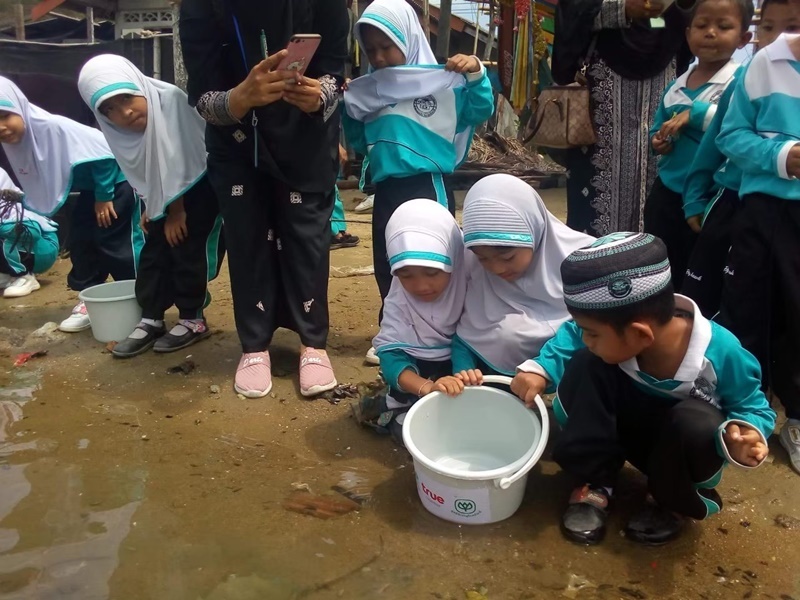Aquatic Animals Banks

For Sustainable Marine Resources Conservation
Project Background :
The degradation of the marine environment has resulted in a significant reduction in the population of aquatic animals in Thai territorial waters, where some species are now nearing extinction. This has impacted the livelihoods of fishermen, who are unable to earn sufficient income to support their families. Therefore, C.P. Group, as a private sector company that plays a role in the agro-industry and food supply chain with direct links to Thailand’s seas, places a strong emphasis on the conservation of marine resources and restoring coastal fishing communities through sustainable means in both the Eastern coastal provinces on the Gulf of Thailand and the Andaman Sea. To address this issue, the Group adopted the ‘SEACOSYSTEM: For Sustainable Thai Seas’ concept, in which one of the key components involves increasing the stock of aquatic animals through innovations for hatching juvenile aquatic animals, or the Aquatic Animal Bank. The ‘Bank’ has been developed by the Group with the goal of reducing the problem of diminishing aquatic animal population and its impacts on fishermen’s incomes and the livelihood of fishing communities. It can be used for breeding aquatic species that lay eggs outside their shells such as blue crabs, giant mud crabs, mangrove crabs, flathead lobsters, giant freshwater prawns, and spiny lobsters. The hatchery system adopts the use of modern technology with an automated control system, which increases efficiency. and flexibility. Not only is it easy to use, but the system also has low maintenance costs and helps to promote community collaboration and engagement, which will consequently support sustainable marine conservation. The Project involved working with 16 communities in eight provinces. Since its launch in 2017, more than 4.7 billion juvenile crabs have been released back into the sea. The innovation has received awards both in Thailand and overseas.





